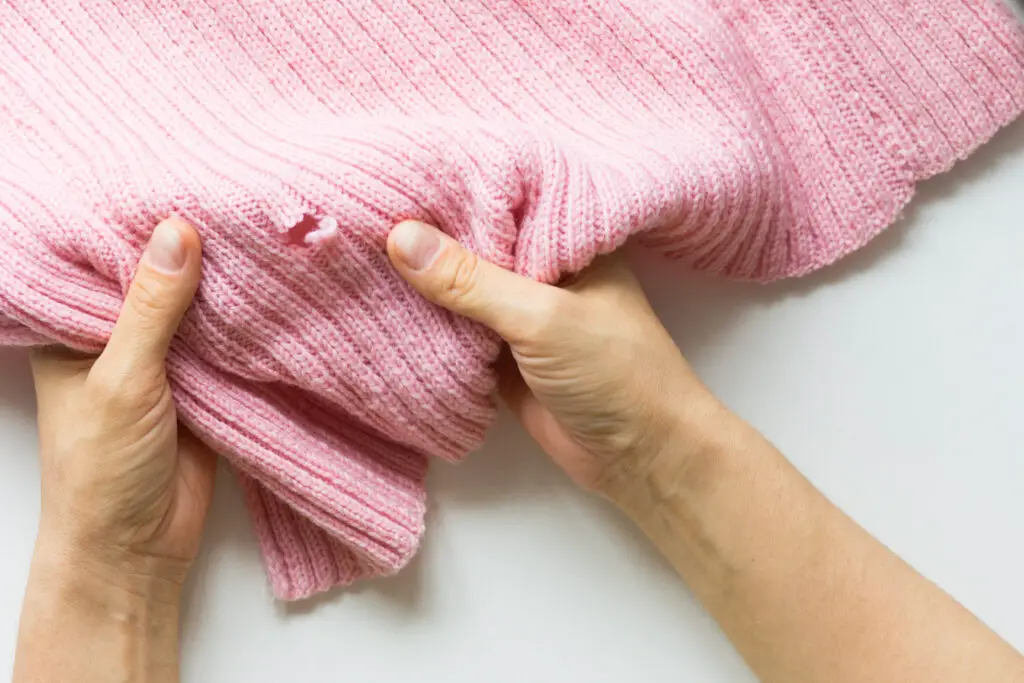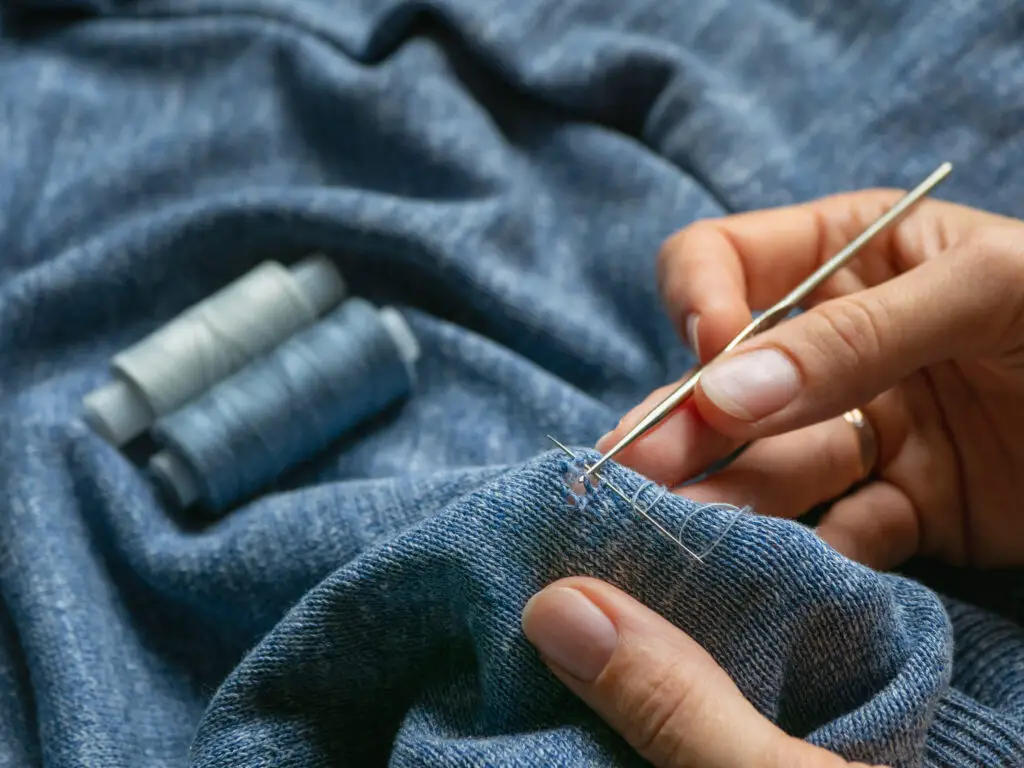
Developing your sewing skills isn’t just about making exciting new things. It can also, importantly, be about repairing the things you already have, so that you can save money and enjoy the clothes and furnishings you love for longer. It’s easy to adapt your skills to repairing seams, buttons and zips, but what about holes in fabric? How can you patch them up effectively so that they look good and don’t come open again?
Darning

The simplest way to repair small holes in the fabric is to darn them. Darning is a sort of weaving process which covers the hole and stops it from getting worse without the bulkiness of patching. Strictly speaking, it’s possible to darn almost any type of fabric, but it’s very difficult to do successfully with fine fabrics and modern materials that are prone to fraying, and it’s impossible to make it look neat on shiny fabric.
The best thread to use when darning will be similar in colour and texture to your fabric, but slightly thicker. Begin by stitching it into the fabric about an inch away from one side of the hole. Use small stitches and then draw a long stitch all the way across the hole and secure it with more small stitches at the other side. Don’t start your long stitch too close to the edge if fraying is a problem.
After you have repeated this process to form a bridge of long stitches running across the hole in one direction, turn your piece of fabric ninety degrees and use more small stitches to secure another thread travelling across the way. This can then be woven into the existing stitches by sliding it under and over them in turn. Repeat until you have created a fine woven patch, and the hole should be repaired.
Darning is easiest if you use a long, blunt-ended specialist darning needle. You may also find that a thimble helps. Good darning will blend into the fabric, but more awkward darning can be concealed using embroidered motifs.
Patching
Some types of fabric can be easily repaired using patches. With the exception of heavy-pile fabrics like fake furs, where the edges can be hidden by the long fibres, this is very difficult to do discreetly, but using very small stitches and pressing the finished piece will help. Often it’s a better idea to acknowledge the patch and make it decorative so that it becomes a feature rather than looking a mess.
Because a patch won’t prevent a hole from tearing further where the original fabric is weak, it can be a good idea to patch a damaged piece of fabric on both sides. If you use a lightweight lining fabric on the inside it will flex easily and won’t look lumpy.
If you have enough free fabric in the item you’re working with, you can sometimes conceal a hole using a dart, effectively making it patch itself. Remember that you may then need to sew a matching dart into the other side of the item to make it look symmetrical.
Re-enforcing Fabric
Often fabric gets damaged because it repeatedly comes under stress. This can happen, for instance, if you wear a top that’s slightly too small for you and it gets strained when you move your shoulders. Holes caused by this kind of damage cannot simply be darned or patched because they’ll just pull open again. The vulnerable fabric needs to be re-enforced.
The best way to repair a tear like this is to begin by lightly darning it. You can then position a patch of stronger fabric across the underside of it and fix this in place using a blanket stitch so that the strain will go through the patch rather than simply pulling stitches out.
There are several adhesive products, available through sewing shops, designed to help secure darning where fabric is under strain. These can be attached to the back of a mended piece of fabric. If you use this method, check carefully to make sure the one you choose says that it’s okay with the type of fabric you’re using, as staining can sometimes occur. This kind of repair may affect how you can wash the item.
